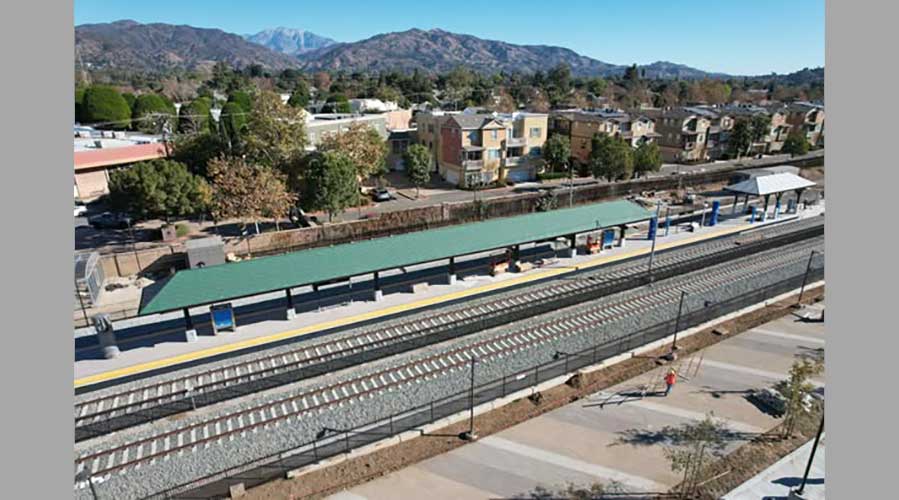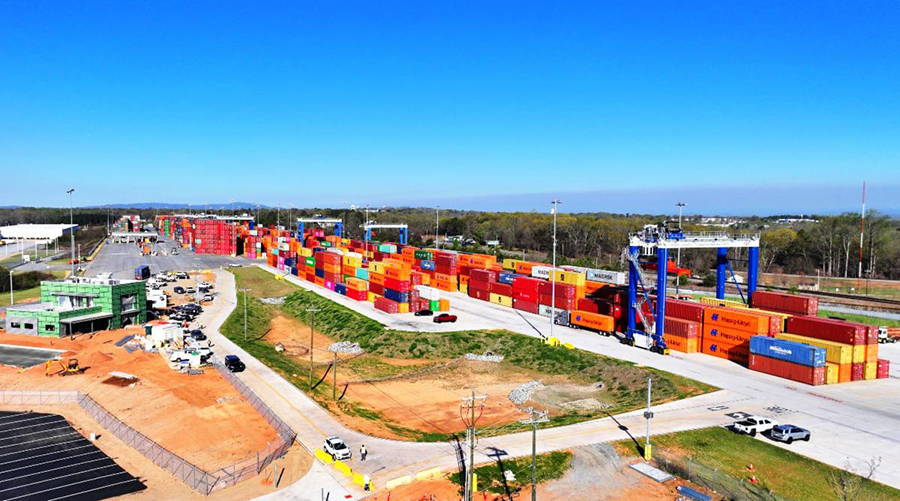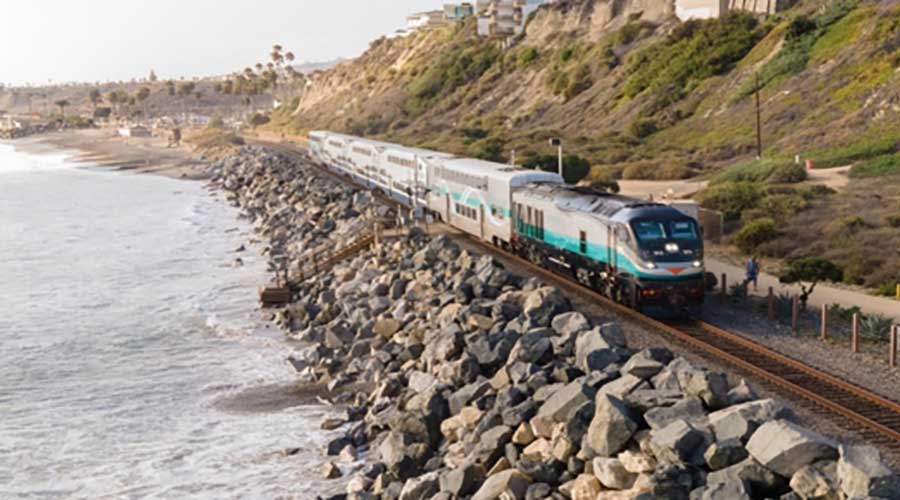Newsletter Sign Up
Stay updated on news, articles and information for the rail industry
Stay updated on news, articles and information for the rail industry
Rail News Home
High-Speed Rail
Rail News: High-Speed Rail
12/3/2009
Rail News: High-Speed Rail
Midwest high-speed association's Harnish recounts HSR observations from trip to Japan, China
advertisement
Midwest High Speed Rail Association Executive Director Rick Harnish spent his Thanksgiving a bit jet-lagged. The long-time high-speed rail advocate had just returned the day before from a 10-day trip to China and Japan, where he toured the countries’ high-speed rail systems.
During a phone interview, Harnish discussed his experiences in the two countries. Among the things he observed in Japan:
• “I got a tour of [Central Japan Railway’s] research facility, which was very cool. They are doing a lot of research on how to prevent derailments during earthquakes. They’ve put a lot of time and resources into designing guardrails that will keep wheels on track during an earthquake. They’re also looking at how to maintain their structures, because it’s now a 45-year-old line and they’ve got almost no mileage on grade; it’s either on a fill or a structure or in a tunnel.”
• “Then we saw a presentation on their high-speed rail development and maglev projects. Their line is designed for speeds of less than 150 mph, and they figured out how to get it up to 170 mph. But on Monday night while I was there, they took a regular trainset out of revenue service after hours and ran it up to 250 mph, just to show they are capable of doing it. The reason for all of that was [that] they want to build high-speed lines overseas. They invited me because they think the Midwest would be an ideal place to build a high-speed line.”
After his visit to Japan, Harnish traveled to China, where he was a speaker at China Rail 2009, a conference aimed at sharing China’s high-speed undertakings with rail industry officials. But the conference ended up taking a bit of a different turn.
“Most of the substance was about what’s going on in other countries,” says Harnish. “They were very excited that President Obama has said he wants to cooperate with China on high-speed rail development.”
While in China, Harnish also took two train tours: one between Beijing and Shanghai, and another between Beijing and Tianjin.
The Beijing-to-Shanghai trip is comparable to the distance between Chicago and Washington, D.C., says Harnish. The train makes the trip in about 10 hours, but a high-speed line currently under construction will enable the railway to travel between the two cities in four hours.
The Beijing-to-Tianjin ride is “basically Chicago to Milwaukee in half an hour,” says Harnish. When Harnish took the trip on a Sunday morning, trains departed the state every 10 to 15 minutes.
“The way that changes how people and cities interact is huge,” says Harnish. “Think about how that would change the dynamic between Chicago and Milwaukee.”
That is hasn’t already happened in the United States is “aggravating” to Harnish.
“The frustrating thing to me is that whenever I go overseas… our cities are the right space apart, the geography here in the Midwest is right and I can’t figure out why we’re not doing this yet,” he says.
And that serves as a constant reminder to Harnish and other high-speed advocates that the United States launch construction on a true high-speed line as soon as possible.
“We really have to start doing this now, we have to figure out where we’re going to put grade-separated, electrified high-speed tracks,” says Harnish. “It’s not going to be cheap and not easy, but there’s got to be a way to do it between Chicago and Milwaukee.
— Angela Cotey
During a phone interview, Harnish discussed his experiences in the two countries. Among the things he observed in Japan:
• “I got a tour of [Central Japan Railway’s] research facility, which was very cool. They are doing a lot of research on how to prevent derailments during earthquakes. They’ve put a lot of time and resources into designing guardrails that will keep wheels on track during an earthquake. They’re also looking at how to maintain their structures, because it’s now a 45-year-old line and they’ve got almost no mileage on grade; it’s either on a fill or a structure or in a tunnel.”
• “Then we saw a presentation on their high-speed rail development and maglev projects. Their line is designed for speeds of less than 150 mph, and they figured out how to get it up to 170 mph. But on Monday night while I was there, they took a regular trainset out of revenue service after hours and ran it up to 250 mph, just to show they are capable of doing it. The reason for all of that was [that] they want to build high-speed lines overseas. They invited me because they think the Midwest would be an ideal place to build a high-speed line.”
After his visit to Japan, Harnish traveled to China, where he was a speaker at China Rail 2009, a conference aimed at sharing China’s high-speed undertakings with rail industry officials. But the conference ended up taking a bit of a different turn.
“Most of the substance was about what’s going on in other countries,” says Harnish. “They were very excited that President Obama has said he wants to cooperate with China on high-speed rail development.”
While in China, Harnish also took two train tours: one between Beijing and Shanghai, and another between Beijing and Tianjin.
The Beijing-to-Shanghai trip is comparable to the distance between Chicago and Washington, D.C., says Harnish. The train makes the trip in about 10 hours, but a high-speed line currently under construction will enable the railway to travel between the two cities in four hours.
The Beijing-to-Tianjin ride is “basically Chicago to Milwaukee in half an hour,” says Harnish. When Harnish took the trip on a Sunday morning, trains departed the state every 10 to 15 minutes.
“The way that changes how people and cities interact is huge,” says Harnish. “Think about how that would change the dynamic between Chicago and Milwaukee.”
That is hasn’t already happened in the United States is “aggravating” to Harnish.
“The frustrating thing to me is that whenever I go overseas… our cities are the right space apart, the geography here in the Midwest is right and I can’t figure out why we’re not doing this yet,” he says.
And that serves as a constant reminder to Harnish and other high-speed advocates that the United States launch construction on a true high-speed line as soon as possible.
“We really have to start doing this now, we have to figure out where we’re going to put grade-separated, electrified high-speed tracks,” says Harnish. “It’s not going to be cheap and not easy, but there’s got to be a way to do it between Chicago and Milwaukee.
— Angela Cotey


 LRW Honors Amtrak’s Acheson As Railway Woman Of The Year
LRW Honors Amtrak’s Acheson As Railway Woman Of The Year
 From Editor-In-Chief Foran: Of Gender Equity And Inclusion
From Editor-In-Chief Foran: Of Gender Equity And Inclusion
 Spotlight On Some Of Today’s Rail Safety Products
Spotlight On Some Of Today’s Rail Safety Products
 Women of Influence in Rail eBook
Women of Influence in Rail eBook
 railPrime
railPrime







